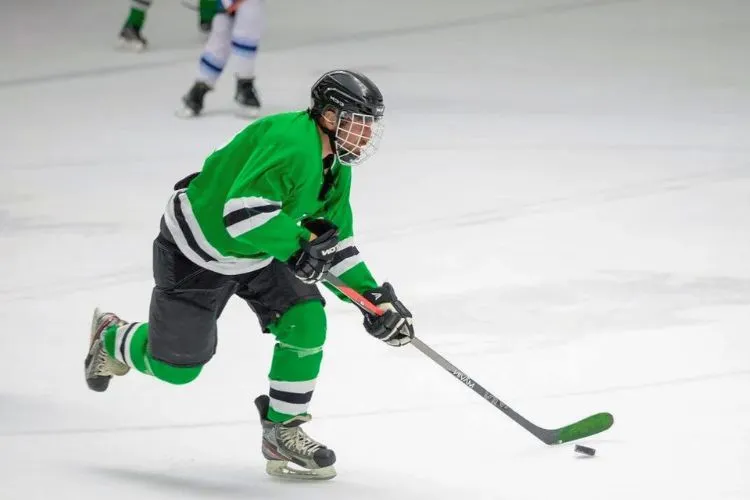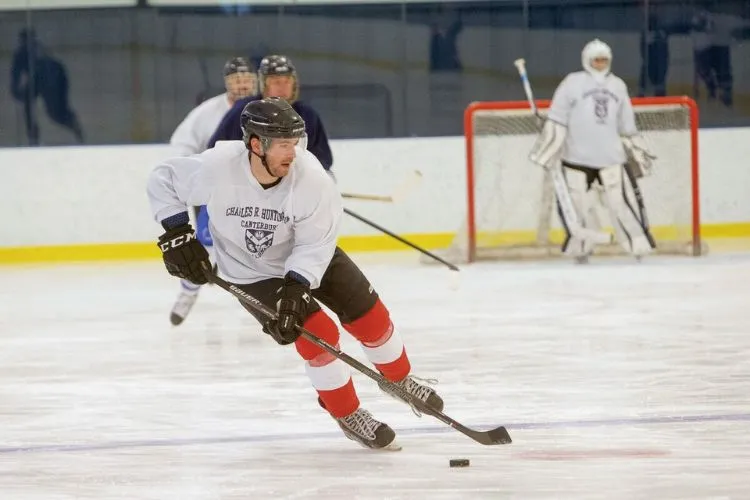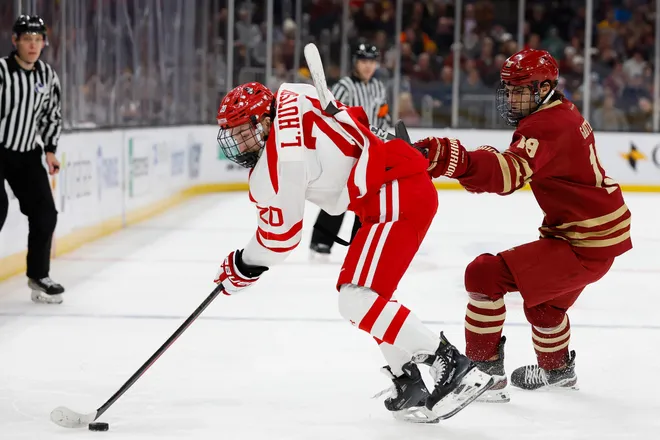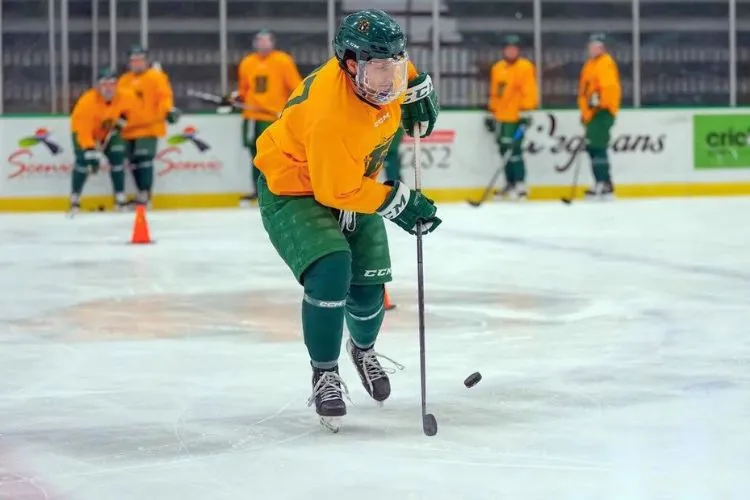Ice hockey, with its blend of speed, skill, and strategy, captivates millions worldwide. A deep understanding of its rules, like the power play, enriches the viewing experience.
The power play, a critical aspect of the game, occurs when one team gains a numerical advantage due to an opponent’s penalty. Let’s learn what is a power play in hockey.

What Is a Power Play in Hockey?
A power play begins when a player commits a violation that leads to a penalty, forcing them to the penalty box and their team to play with fewer players.
This situation gives the non-penalized team a numerical advantage on the ice, increasing their chance of scoring.
The Role of Penalties
Penalties such as minor, major, and misconduct can lead to power plays. Minor penalties are most common, and their causes range from tripping to high-sticking.
Major penalties, often for more severe infractions like fighting, and certain misconduct penalties also result in power plays, although their conditions differ.
Types of Power Plays
A “minor power play” occurs after minor penalties, usually lasting two minutes or until the opposing team scores. A “major power play” may continue for the full duration of the penalty, regardless of how many goals the advantaged team scores.

The “5-on-3” is a rare but exciting situation where one team gains a two-player advantage due to multiple penalties.
Strategies During a Power Play
The team with the advantage often employs specific offensive strategies aiming to exploit the numerical edge. This includes precise passing and positioning to create scoring opportunities.
The shorthanded team focuses on defense, trying to clear the puck out of their zone and kill off the penalty time.
Impact on the Game
Power plays can significantly influence the game’s outcome. Teams with high power play percentages tend to have better overall success rates. Players who specialize in power play situations can change the momentum with their skillful play.
Power Play Challenges
Despite the advantage, executing a successful power play has its challenges. Teams must synchronize their efforts and overcome the defense’s strategies aimed at disrupting their plans. Practice and preparation are crucial for power play success.
The Role of Coaching
Coaching plays a vital role in power play success. Decisions on which players to deploy and what strategies to employ can make the difference between scoring and wasting the opportunity.
The Aftermath of a Power Play
Following a power play, teams reassess their strategies. Scoring can boost morale, while failing to capitalize might have the opposite effect. The game’s flow can be significantly impacted by what happens during these crucial moments.
Power Play Variations in Different Leagues
Power play rules can vary across different leagues. The NHL, IIHF, and collegiate hockey each have their own set of regulations that slightly adjust how power plays work, making the game unique in each context.
Evolution of the Power Play
The evolution of the power play in professional leagues showcases hockey’s strategic depth and adaptability. Historically, power play strategies were straightforward, focusing on brute force shots from the point and relying on physical battles in front of the net.

Over decades, the approach has become more sophisticated, with teams emphasizing speed, skill, and intricate passing sequences to dismantle the opposing team’s penalty kill formation.
The introduction of the “umbrella,” “1-3-1,” and “overload” formations has transformed power play strategies, leading to success rates fluctuating as teams and coaches devise new methods to gain the upper hand.
Rule changes have significantly influenced power play execution. The NHL’s restriction on two-line passes was lifted in 2004-2005, enabling more dynamic breakouts and increased scoring opportunities during the power play.
Additionally, crackdowns on obstruction and interference penalties have made speed and skill more crucial, further shifting power play dynamics. These adjustments have not only made power plays more lethal but have continually shaped the strategic evolution of this critical game aspect, compelling teams to innovate constantly or be left behind.
You may also read: Types of Hockey Helmets | Hockey Skates vs Figure Skates
Power Play Terminology
Understanding power play terminology enhances appreciation of hockey’s strategic nuances. The “point man” refers to a player positioned at the blue line during a power play.

This player often controls the puck’s movement, providing long shots or distributing the puck to create scoring opportunities. The “umbrella formation” is a strategic power play setup involving three players forming a triangle, with one at the point and two on the sides.
This formation opens up various passing lanes and shooting angles. “Screening the goalie” involves positioning a player in front of the opposing goaltender to obstruct their view of the puck.
This tactic increases the chances of the puck going unnoticed into the net, vital for converting power play opportunities. These terms are essential for dissecting power play tactics and appreciating teams’ strategic efforts to capitalize on their numerical advantage.
Pro Tips
Understanding power play setups and strategies enhances the viewing experience. Knowing what to look for helps fans appreciate the nuanced tactics teams employ during these critical moments.
Frequently Asked Questions (FAQs)
How long does a power play last in ice hockey?
A minor power play lasts for two minutes or until the advantaged team scores, while a major power play could last the full five minutes, regardless of scoring.
What happens if a team scores during a power play?
In the case of a minor penalty, the power play ends. For a major penalty, the power play continues.
Can a team decline a power play opportunity?
Teams cannot decline a power play awarded due to an opponent’s penalty.
What is a good power play percentage in hockey?
A power-play percentage above 20% is generally considered good in professional hockey.
How does the NHL’s power play differ from that of the Olympics?
The key difference lies in the rules that govern penalties and the resulting power plays, which can affect the duration and strategy of power plays.
Conclusion
The power play is a pivotal aspect of ice hockey that can dramatically affect the game’s outcome.
Understanding what constitutes a power play, the strategies involved, and the potential impact on the game not only enhances the viewing experience but fosters a greater appreciation for the strategic depth of this fast-paced sport.

Matthew James is a passionate skater who wanted to create a platform to share his love for skating with others. With a vision to create a vibrant community of skaters, he aims to provide a space where skaters of all levels can connect, learn, and grow together.
